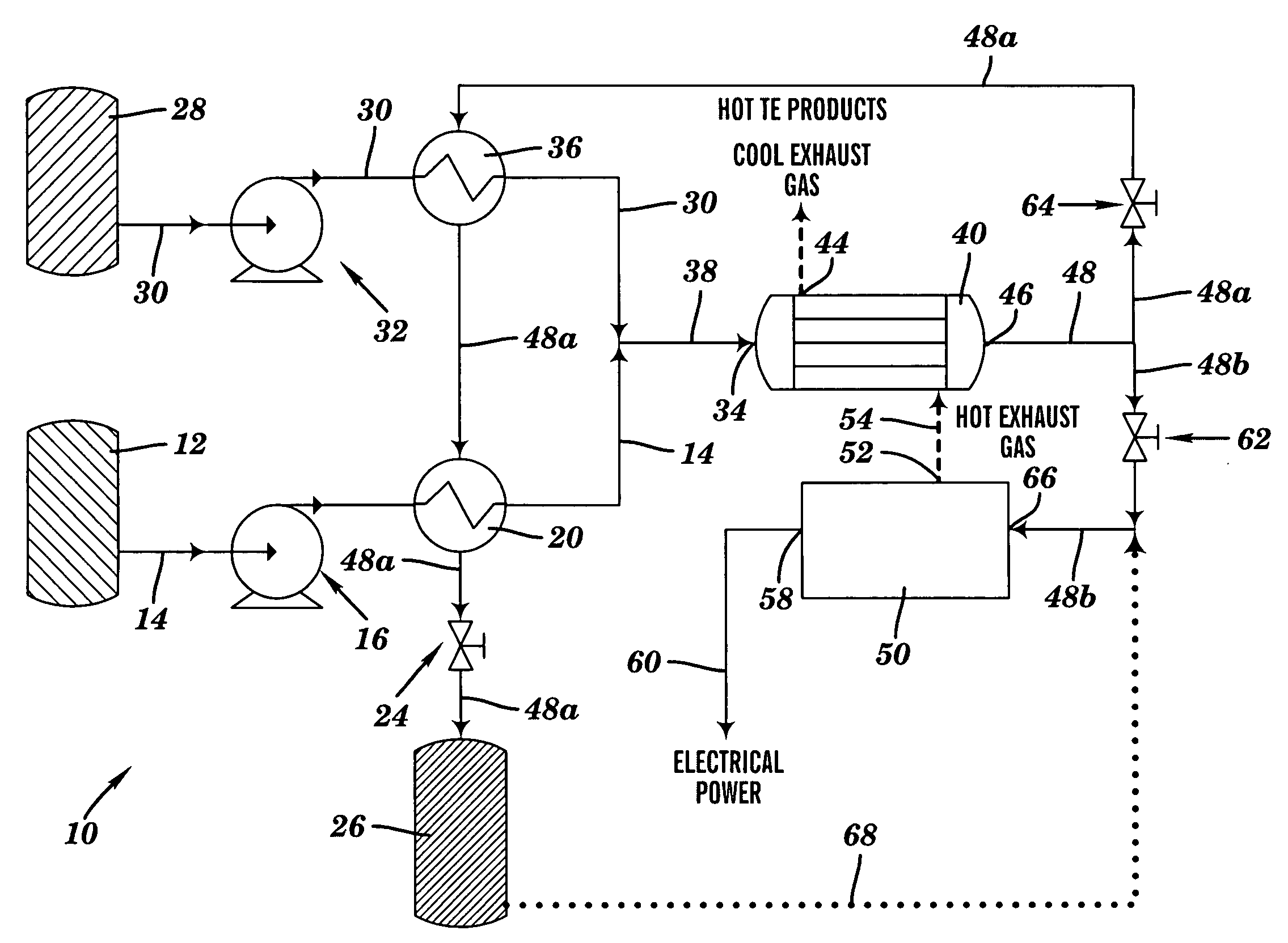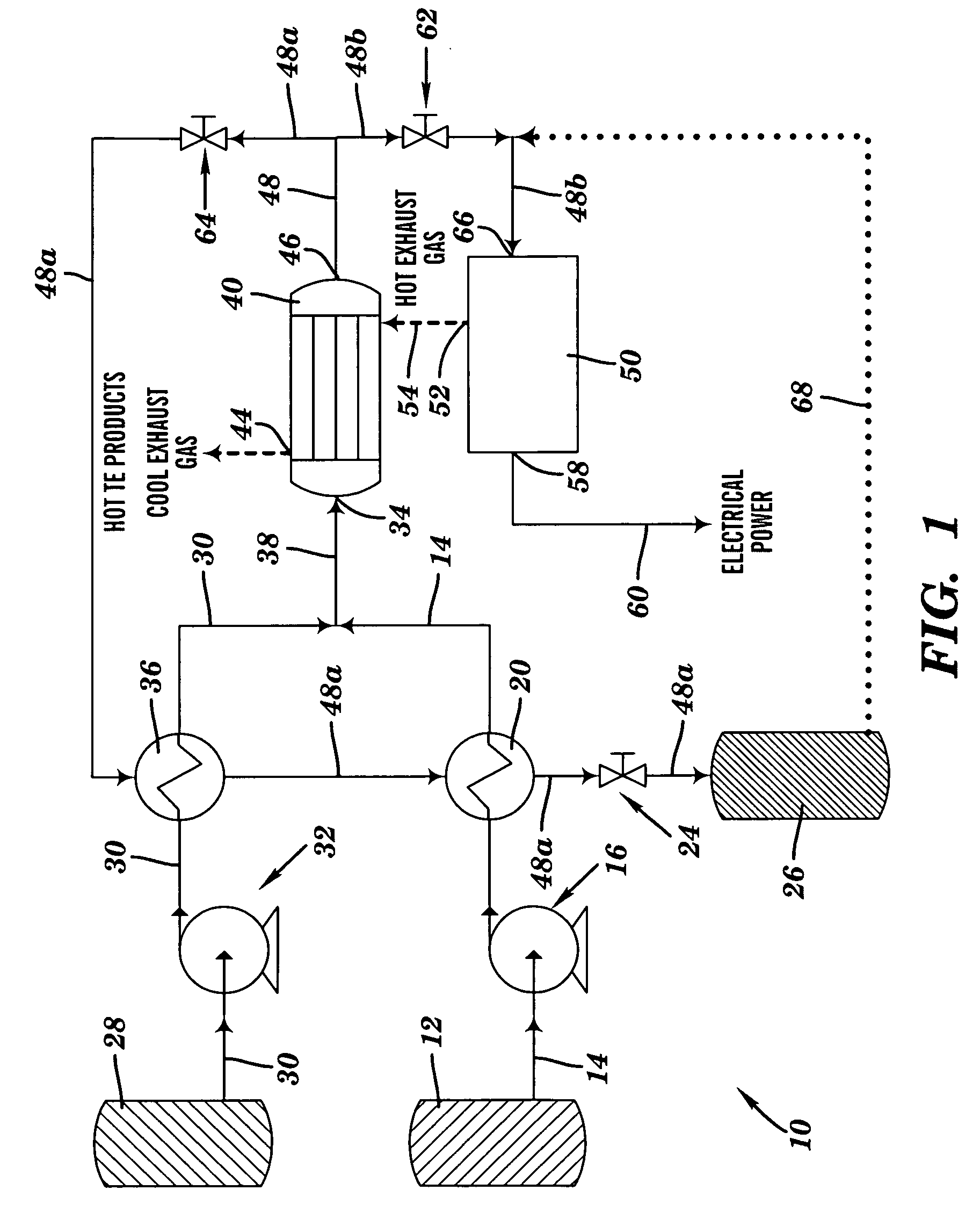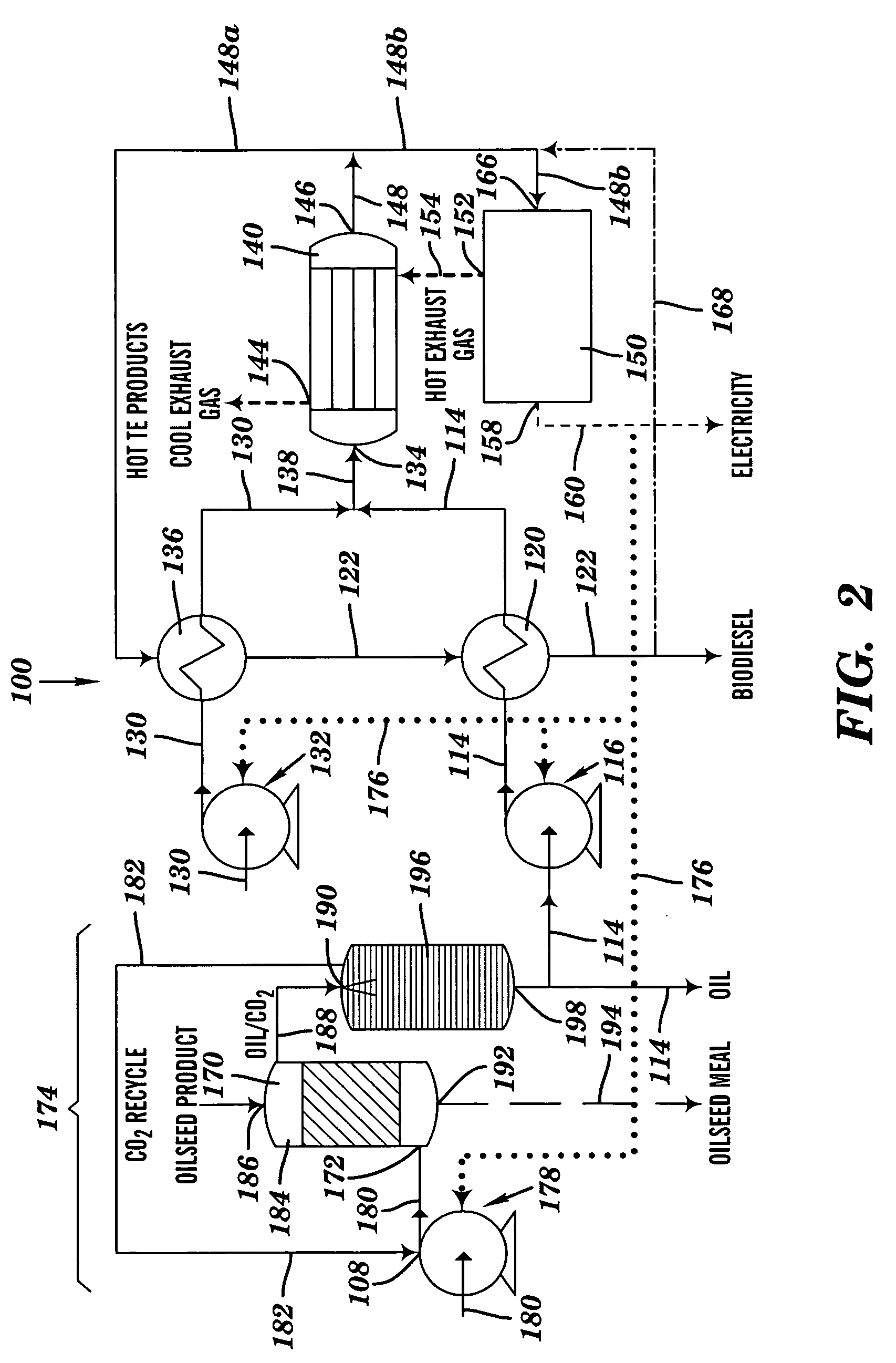Integrated multistage supercritical technology to produce high quality vegetable oils and biofuels
- Summary
- Abstract
- Description
- Claims
- Application Information
AI Technical Summary
Benefits of technology
Problems solved by technology
Method used
Image
Examples
example 1
Transesterification of Vegetable Oils
[0076]A laboratory apparatus (FIG. 3) was assembled for transesterification of vegetable oil. As shown in FIG. 3, the apparatus includes three syringe pumps (Teledyne Isco) for oil, alcohol, and CO2 delivery; tubular reactors (coiled Hastelloy pipes of 2 and 4 m in length and 1.5 mm I.D.) heated in an electrical furnace; a view cell (designed and constructed at Syracuse University) to monitor phase transitions, heated at reactor temperature by four heating cartridges inserted in its 316-SS block; and a separator for liquid and gaseous transesterification product separation. Any of the reactor feeding streams can be preheated to the desired temperatures by using electrical heating tapes wrapped around feeding pipes which are similar with those of the reactor.
[0077]Experiments with tubular reactors (Table 2) have been executed to select ranges of pressure / temperature conditions, feedstock composition and residence time under which the highest yield...
PUM
 Login to View More
Login to View More Abstract
Description
Claims
Application Information
 Login to View More
Login to View More - R&D
- Intellectual Property
- Life Sciences
- Materials
- Tech Scout
- Unparalleled Data Quality
- Higher Quality Content
- 60% Fewer Hallucinations
Browse by: Latest US Patents, China's latest patents, Technical Efficacy Thesaurus, Application Domain, Technology Topic, Popular Technical Reports.
© 2025 PatSnap. All rights reserved.Legal|Privacy policy|Modern Slavery Act Transparency Statement|Sitemap|About US| Contact US: help@patsnap.com



